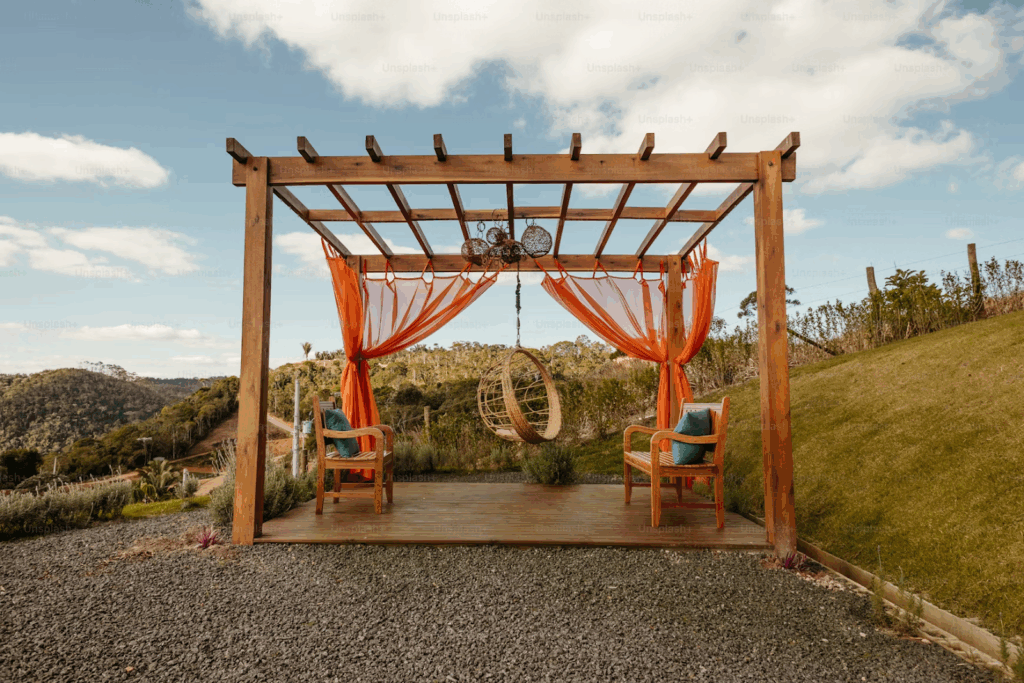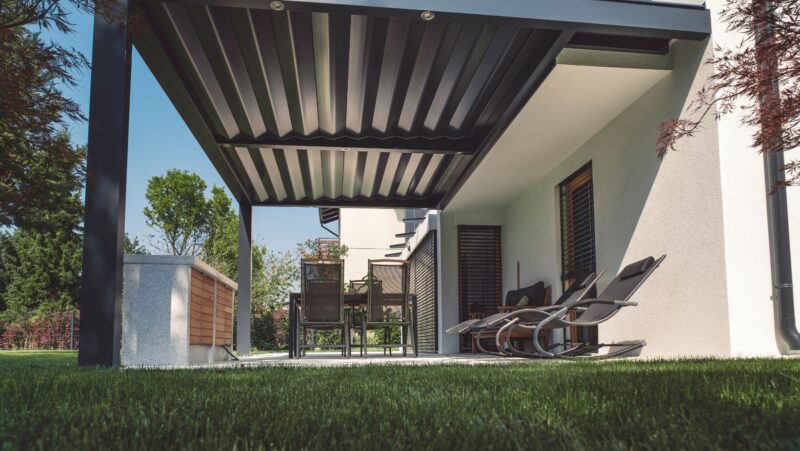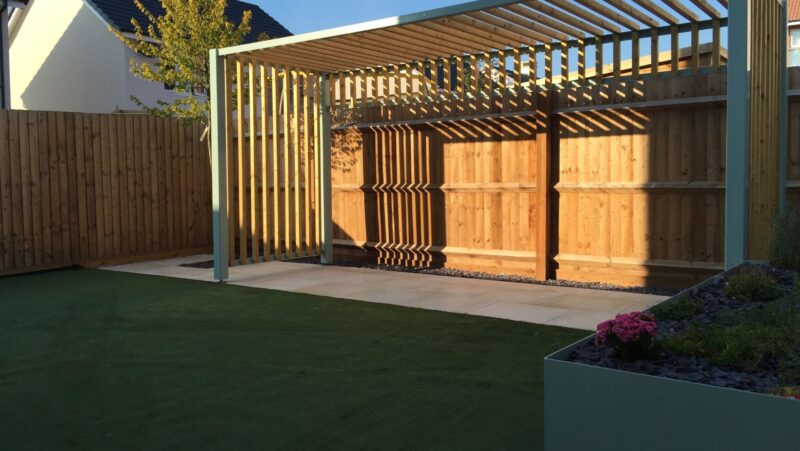Cost-Effective Pergola Solutions for Budget-Conscious Homeowners

Ready to upgrade your yard but afraid of the price tag?
Your dream yard is only as good as the space you live in. A little makeover like a pergola can transform a dull backyard into a lush oasis where you can relax with friends and family and get away from the stress of daily life.
The problem is that most people assume pergolas are always going to be really expensive. Quotes from contractors often have people running for the hills.
The truth is that you don’t have to spend a small fortune to have the backyard of your dreams. Savvy homeowners are finding ways to build beautiful pergolas for a fraction of the price they thought was possible. A little knowledge about pergola prices and design can get you a gorgeous backyard structure that others will think cost twice what it did.
In this guide, you’ll learn:
- Real Pergola Costs (By the Numbers)
- Budget Materials That Don’t Suck
- DIY vs Professional Installation (Breakdown)
- Hidden Money-Saving Tips
- Ultimate Shopping Strategy (Score Huge Discounts)
Real Pergola Costs (By the Numbers)
Ok, let’s get down to brass tacks here. Don’t fall for the marketing hype and low-ball offers that have been designed to keep you confused. This is how much things really cost.
Professional installation costs for pergolas will fall in the range of $2,100 to $6,000 on average. The wide range is due to options in materials, size, and customization levels. Once again, your actual cost is variable and entirely based on your choices.
Hang with me here though because the math works in your favor when you understand it. Ready for some real talk about your backyard budget?
Materials are 80% of the total cost
Let me say that again real slow. Materials make up 80% of your pergola’s total installation costs. Labor costs only account for the remaining 20%. The upshot is that if you’re willing to do some of the work yourself, you can save a ton of money. (Don’t worry, I’ll cover that later)
The average cost of a DIY pergola is going to be between $1,500 and $3,000 depending on your choices. That means you’re going to save between $500 and $1,000 in labor costs by doing the installation yourself vs a professional.
The key takeaway is that your material choices drive this budget in one direction or another:
- Size (larger, of course, costs more)
- Choice of materials (covered in detail below)
- Design style (less is more)
- Site prep needs
- Cost of living in your area
Budget Materials That Don’t Suck
The good news is that you have a few great budget options for your pergola project.
Let’s cover the basic materials choices with some real numbers behind each one.
When choosing pergola design and installation materials, expertly built pergolas depend on high-quality materials for both budget and durability. I’m going to break down your best value choices below so you can make an informed decision about the foundation for your pergola without breaking your budget.
Pressure Treated Pine: The King of Budget Building
Material Cost: $20-35 per square foot
Pressure-treated pine is the budget builder’s best friend. It’s readily available, highly resistant to rot and insects, and a fraction of the price of more premium woods. It’s also readily available at any lumber yard and can be stained or painted for added flair.
Cedar: The Best Value Choice
Material Cost: $25-35 per square foot
Cedar is great if you want the look of a premium wood without the premium price tag. It’s naturally weather resistant and works just as well as pressure-treated pine. It’s also easier to cut and work with.
Aluminum: The Never-Ending Winner
Material Cost: $10-30 per square foot
Want something that’ll last forever with no maintenance? Aluminum pergolas are one of the most durable on the market and will never rust. The downside is that you may need professional installation with aluminum, but that’s offset by the never-ending lifespan.
Vinyl: The Compromise
Material Cost: $10-30 per square foot
Vinyl has many of the same benefits as aluminum. Low maintenance, weather resistance, and very durable. Vinyl is also lightweight, making it one of the easier DIY choices. The only downside is the lack of a natural look you can get from wood.
DIY vs Professional Installation (Breakdown)
This is a big one for determining how much money you’ll spend.
This decision can either save you or cost you thousands of dollars.
Pros and Cons of DIY Installation:
- Save $500-1,000 in labor costs
- Full control over schedule and process
- Must have basic carpentry skills
- Require proper tools
- Takes longer to build
Pros and Cons of Professional Installation:
- Guaranteed structural safety
- Faster
- Permits and inspections handled
- Higher initial cost
Bottom line, a basic rectangular pergola is very doable for a DIY build if you have some construction experience. Custom or complex designs with specialty features should almost always be installed by professionals.
Hidden Money-Saving Tips
Ok, you got this far. Let’s go a little deeper with some insider hacks to squeeze every penny from your budget.
Start Simple, Upgrade Later
Focus on getting the basic pergola structure in place now. Add features like lighting or curtains when your budget permits.
Build a foundation to upgrade over time. You can start with the framework and slowly add the niceties.
Use Existing Structures
You can attach your pergola to existing structures like your house, deck, or balcony. It saves the need for support posts on that side and reduces both material and labor costs.
Buy Materials in Bulk
Buying lumber, fasteners, and hardware in larger quantities usually results in better per-unit pricing.
Time Your Purchase Right
Shop during off-season periods for materials. End of season sales (late fall, winter) can offer great discounts on outdoor building supplies.
Pergola Kits Are Your Friend
Pre-fabricated pergola kits can actually be more cost-effective than individual materials. They include all necessary parts for a specific design and are engineered for easy assembly.
Smart Shopping Tips (Ultimate Strategy)
Information is power when trying to get the best deal. Do your research and you’ll impress your contractor with your knowledge.
- Shop around with multiple suppliers – Compare prices at local lumber yards, specialty suppliers, and online retailers.
- Buy damaged or clearance materials – Lumber with cosmetic damage is often discounted significantly. It won’t matter if you plan to stain or paint anyway.
- Purchase standard sizes – Custom cuts are extra. Design your pergola using standard lumber dimensions.
Planning your Pergola’s Foundation
You need to think about the structure underneath your pergola, but you don’t have to go crazy with concrete work.
You can attach to existing patios or decks, simple gravel pads with post anchors, or basic DIY concrete footings.
Making Your Budget Work
Budgeting and shopping on a plan is critical. Set a hard budget before looking at materials or starting designs. Stick to it. Focus on function over form – what do you need from your pergola? Shade? Privacy? Dining area? Focus on those specific requirements.
You can always upgrade later. Build something good you can work on later.
Summary – Final Bottom Line Numbers
A typical pergola is about 10×12 feet. Here are the cost ranges.
Budget DIY Option (Pressure-treated pine)
- Materials: $800-1,200
- Tools (if required): $200-400
- Total: $1,000-1,600
Mid-Range DIY Option (Cedar):
- Materials: $1,500-2,200
- Tools: $200-400
- Total: $1,700-2,600
Professional Installation:
- Add $1,000-2,000 to any material cost range above
- Total range: $2,000-4,600
Your Next Steps
Budget-friendly pergolas don’t mean low-quality pergolas. You can be smart with your money without sacrificing the value of your materials or the structure itself.
Choose materials that match your local climate and are in line with the maintenance you’re willing to do. Plan for a simple, functional pergola now that you can add to and enhance over time. The best pergola is the one you build vs the perfect one you never get around to starting.



 How to Get the Most Materials for Home Improvements
How to Get the Most Materials for Home Improvements  What Does Your Roofing Company Want You to Know
What Does Your Roofing Company Want You to Know